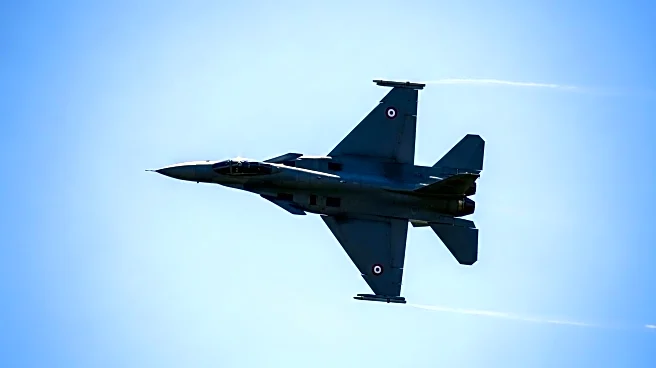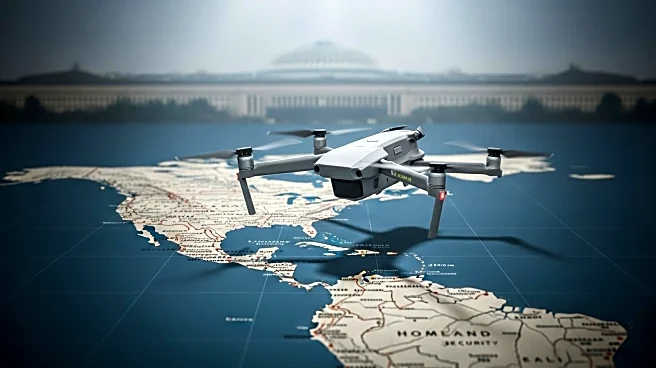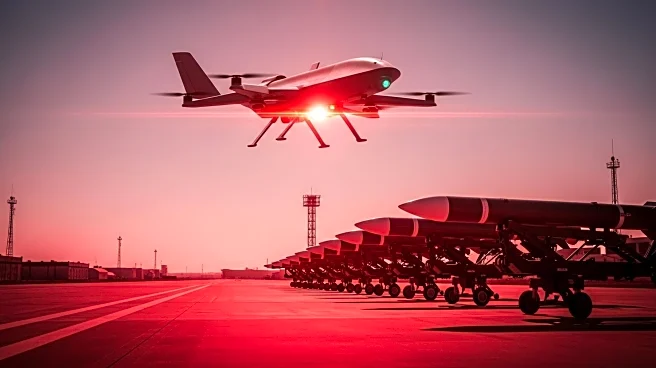What is the story about?
What's Happening?
The U.S. Department of Defense has awarded a $5.04 billion contract to Raytheon Co. for the development and deployment of the Coyote Missile System. This contract includes the provision of fixed and mobile launchers, kinetic and nonkinetic interceptors, and Ku-band radio frequency radar systems. The contract was awarded through a cost-plus-fixed-fee agreement following an internet solicitation that received only one bid. The Army Contracting Command at Redstone Arsenal, Alabama, will oversee the contract, with work expected to continue until September 28, 2033. This initiative is part of a broader missile defense strategy under President Trump's administration, which is seeing a significant increase in the Pentagon's budget.
Why It's Important?
This contract is a critical component of the U.S. defense strategy, reflecting a shift in federal spending priorities towards enhancing missile defense capabilities. The $5 billion investment in the Coyote Missile System is part of a larger $1.01 trillion national defense budget for fiscal year 2026, which represents a 13.4% increase. This budget prioritizes missile defense, homeland security, and deterring threats in the Indo-Pacific region. The contract underscores the administration's focus on strengthening national security through advanced defense technologies, while also highlighting the reallocation of federal funds from non-defense discretionary programs to defense initiatives.
What's Next?
The Coyote Missile System contract will be executed through individual task orders over the next eight years, with specific work locations and funding allocations determined incrementally. This approach allows for flexibility in deployment and resource management. The defense budget expansion is supported by a Republican-controlled Congress reconciliation bill, ensuring that defense spending increases are not dependent on broader appropriations negotiations. The administration's fiscal strategy includes significant cuts to non-defense discretionary spending, aiming to generate savings and balance the budget while enhancing defense and border security.
Beyond the Headlines
The decision to significantly increase defense spending while cutting non-defense discretionary programs raises questions about the long-term implications for domestic policy and public services. The reallocation of funds may impact areas such as education, healthcare, and infrastructure, potentially leading to debates about the balance between national security and domestic welfare. Additionally, the focus on missile defense and military capabilities reflects broader geopolitical tensions and the U.S.'s strategic priorities in the face of global threats.
AI Generated Content
Do you find this article useful?














